

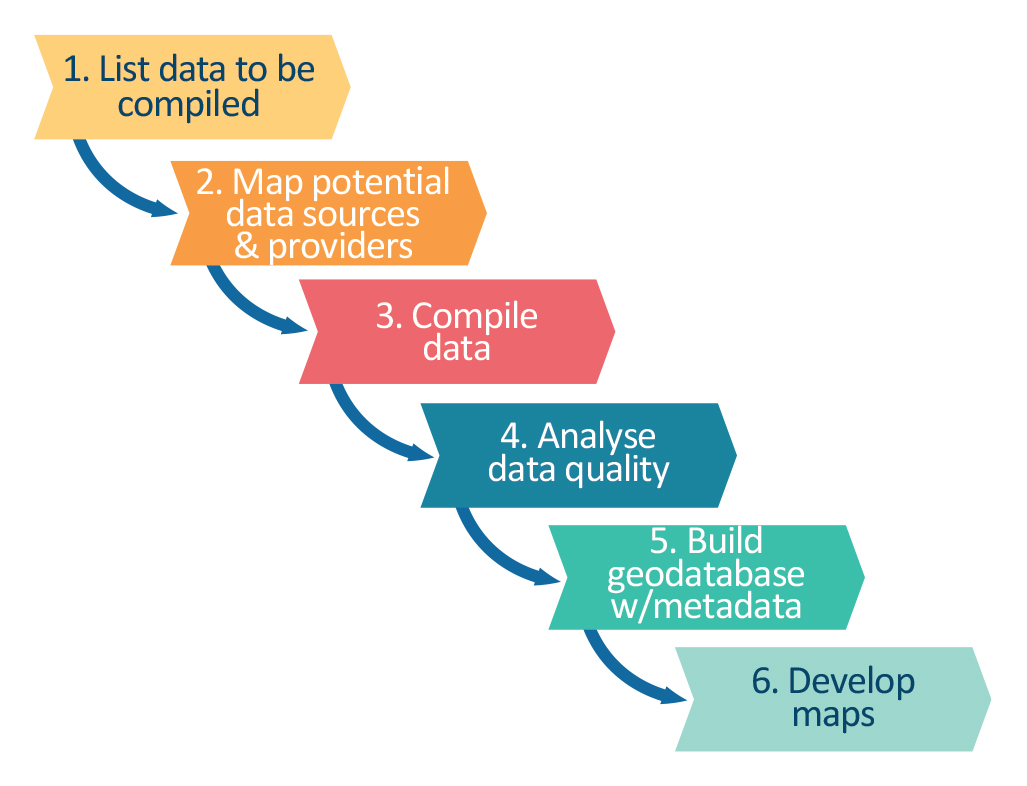
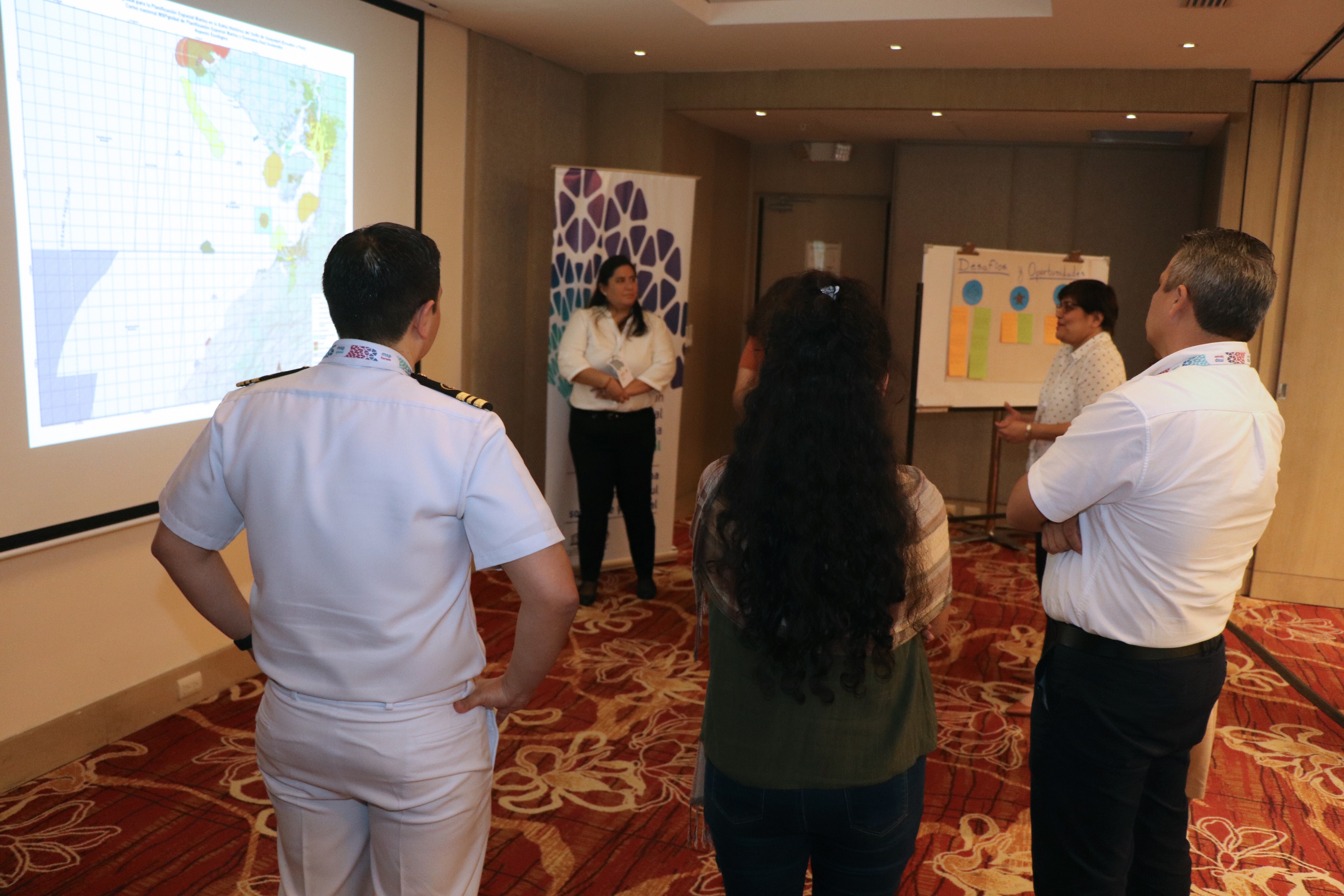
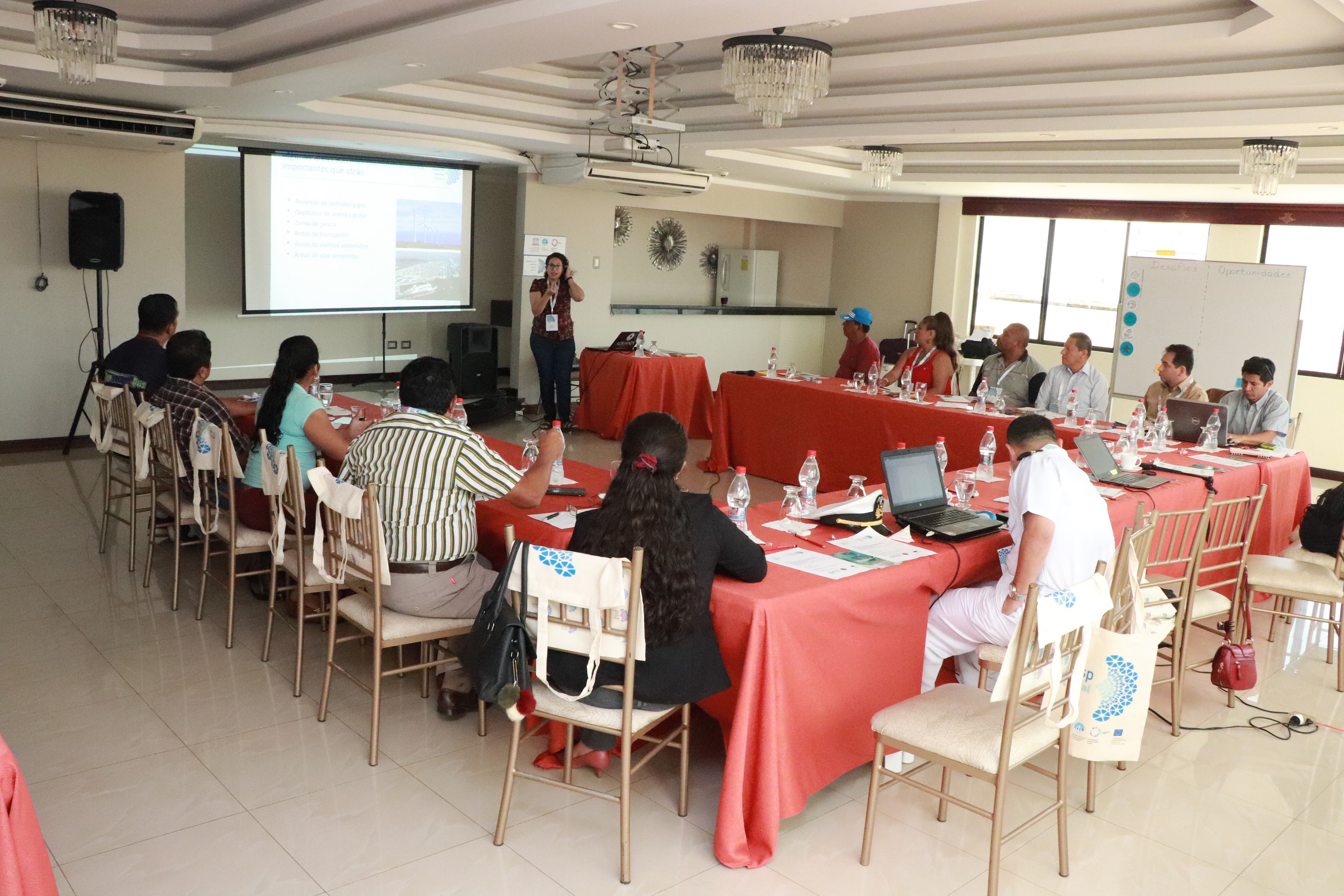
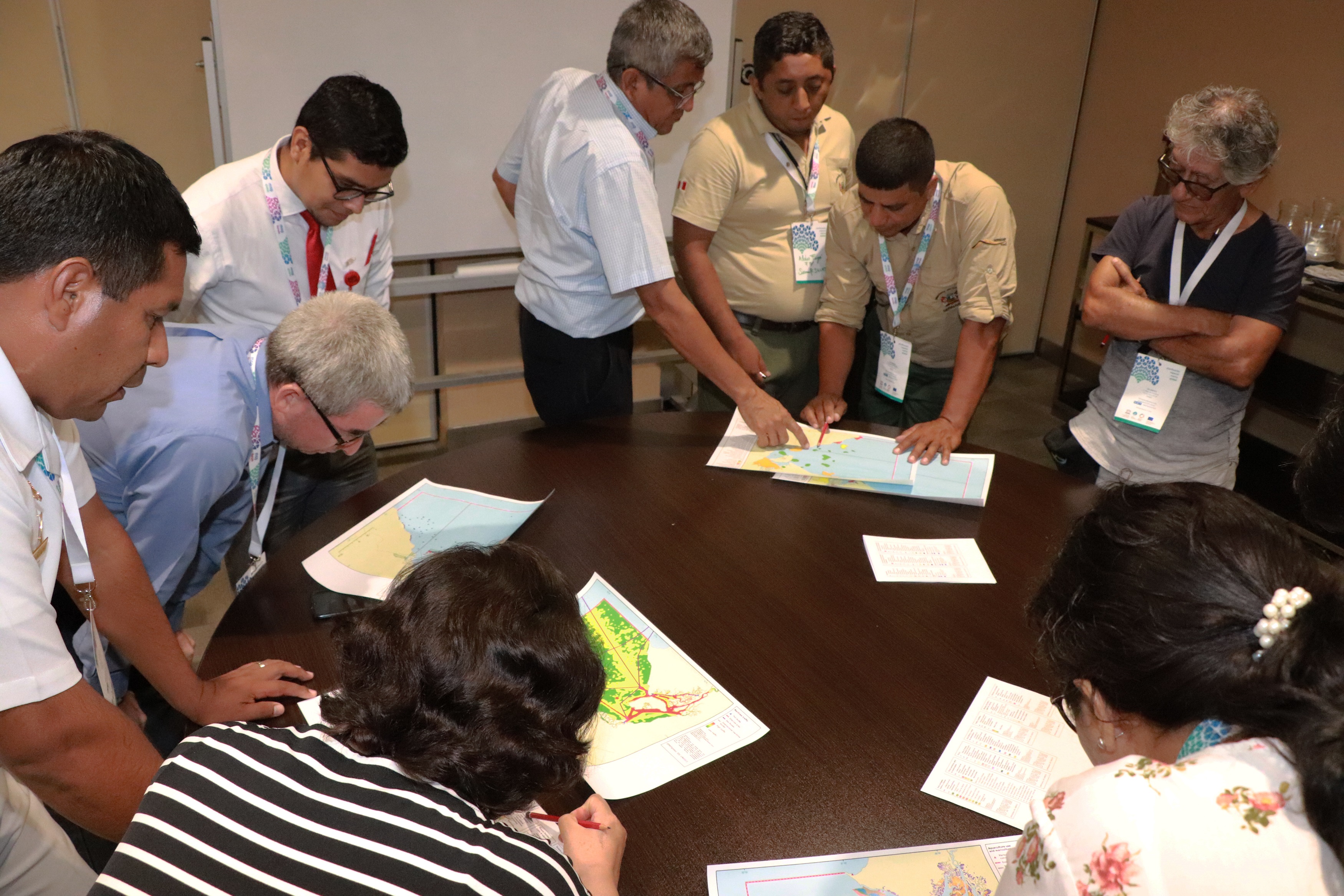
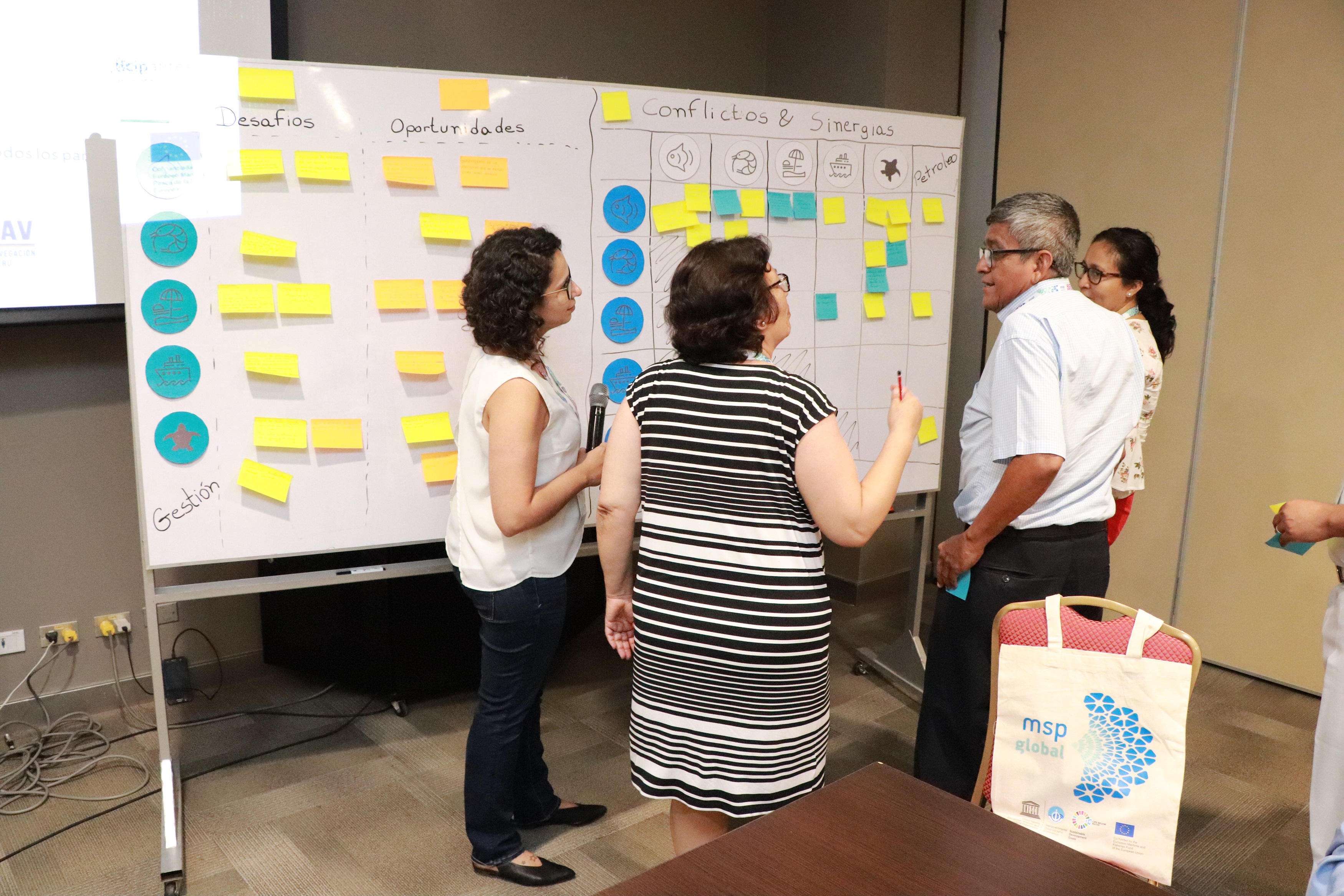
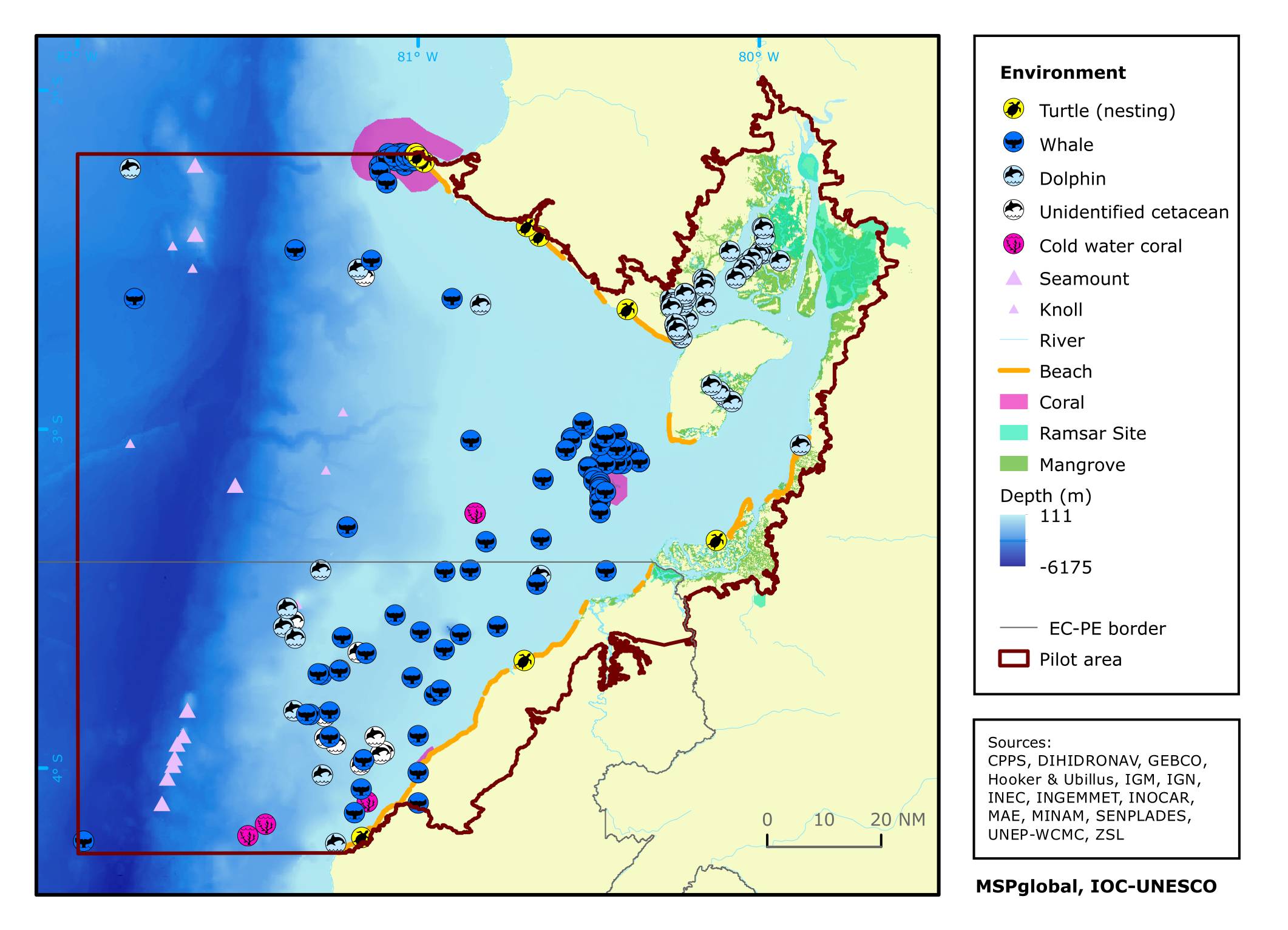
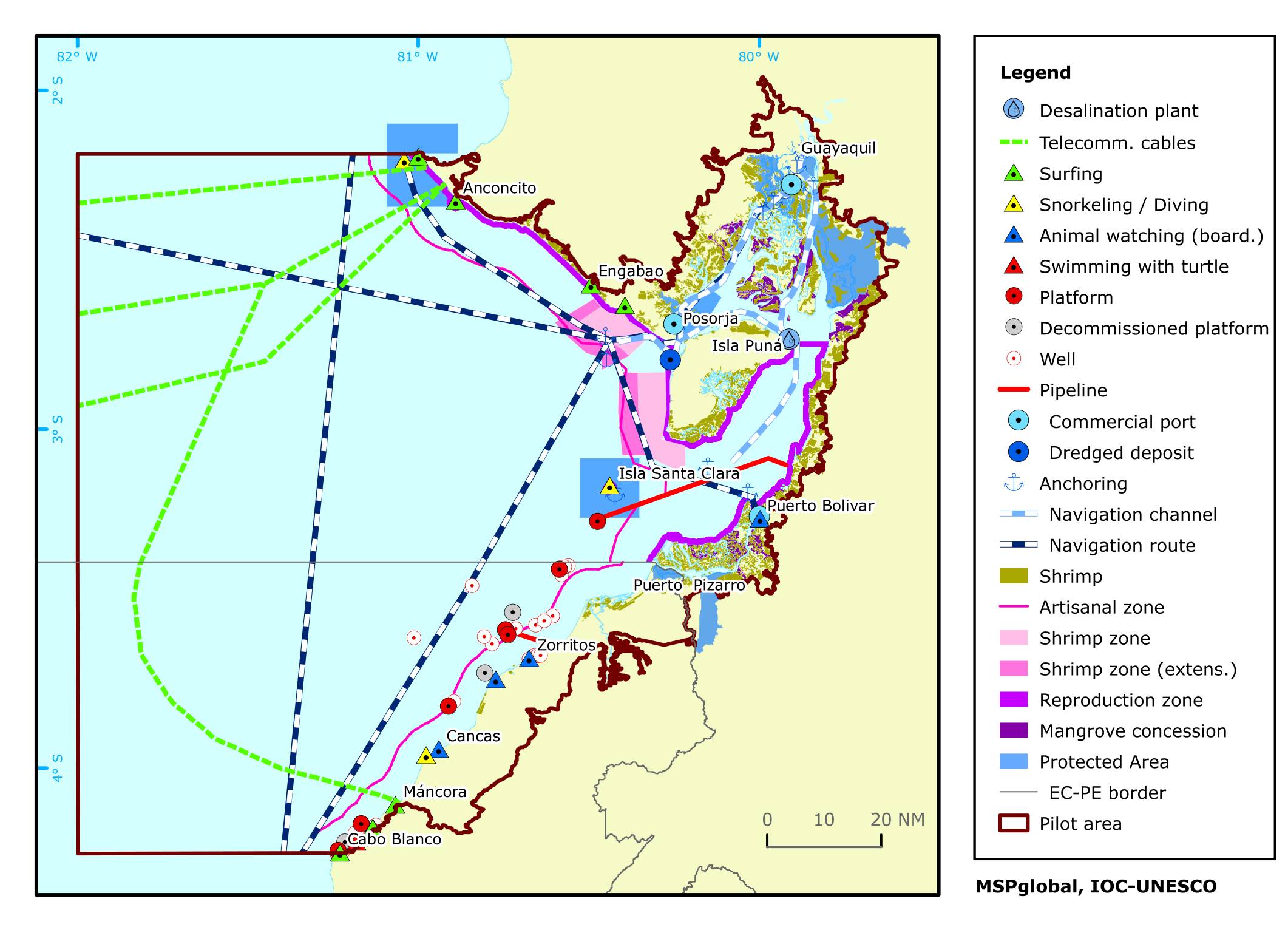
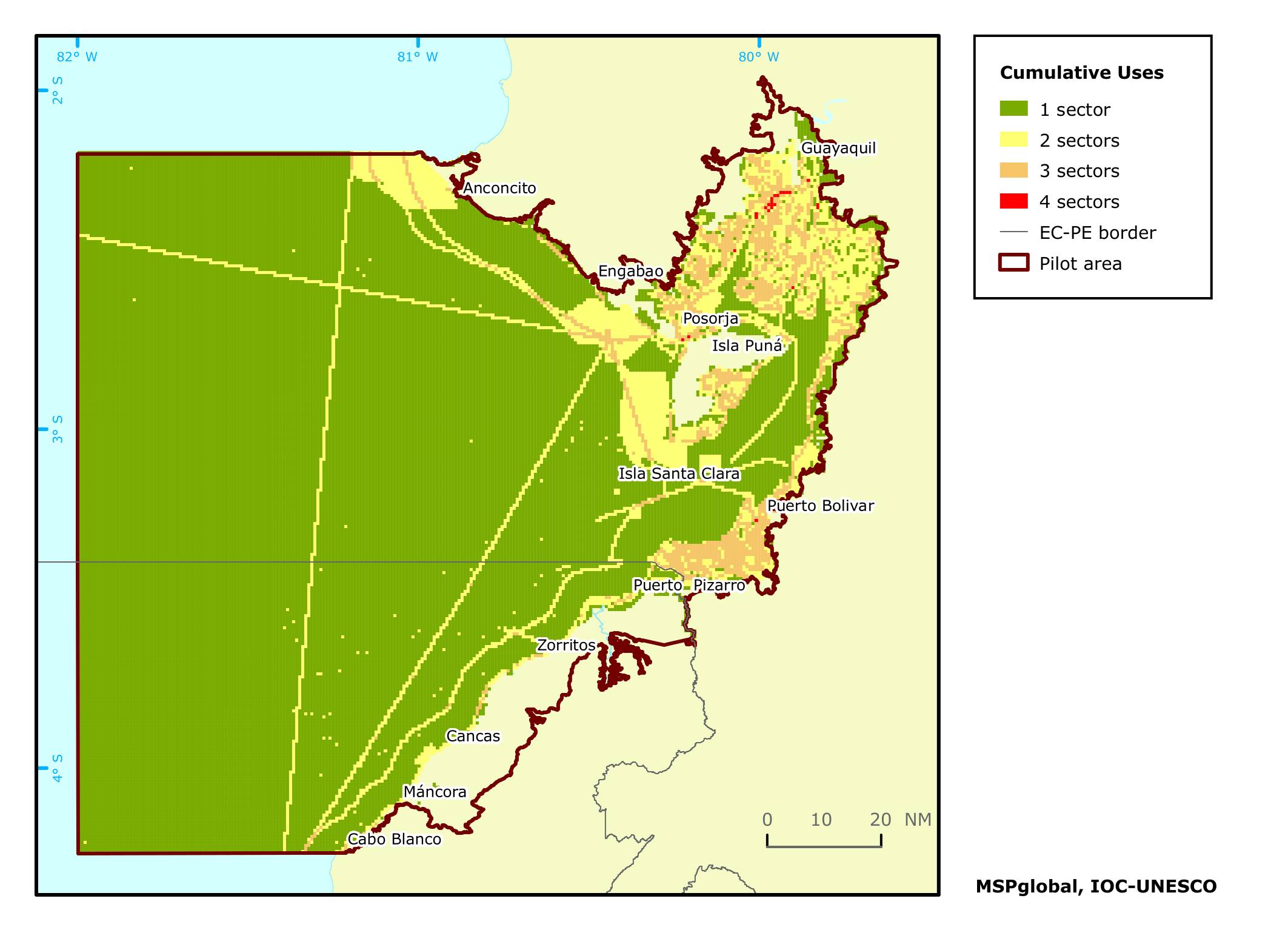
This Building Block aimed to analyze the current conditions of the Gulf of Guayaquil (historical bay shared by Ecuador and Peru) as an example that could be replicated in other cross-border areas. Policies, data and information on the marine environmental and main maritime uses were analyzed to identify use-use and use-nature conflicts and compatibilities, resulting in the development of a technical report publicly available.
Spatial data was compiled with the support of the National Focal Point of each country, who contacted and requested the data to the competent governmental authorities. A geodatabase with metadata was built and maps developed. Consultation activities (local and binational) were organized with stakeholders in order to review the maps and provide further information about conservation and sectoral issues.
- Access to public national, regional and international data sources
- Data from previous project developed in the region
- Key governmental partners to support data compilation
- Increasing willingness of data providers to share the data due to engagement activities
- At least one member of the team with expertise in spatial data available during the whole initiative in case additional analysis is necessary
- Policies: Analyze them as a package to understand their connections, overlaps and gaps, as well as the governance framework. Some policies provide relevant information about zones already established for different sectors, although this kind of spatial data is not always publicly available
- Data providers: Map the potential data providers and then request data through a key governmental partner in order to increase the chance of a positive answer
- Lack of data: Some institutions might not be willing to share data, so it is important to be transparent and acknowledge data gaps
- Data quality: Validate with experts the reliability of data compiled from a source outside of national or international institutions; and if needed, remove it from the analysis